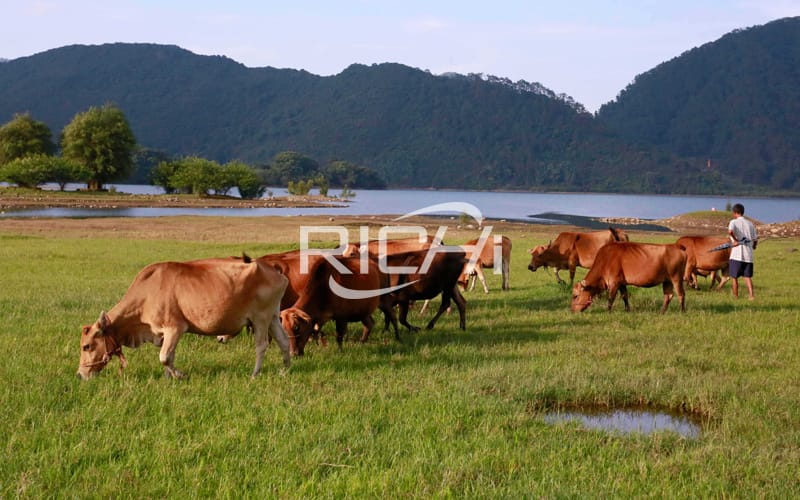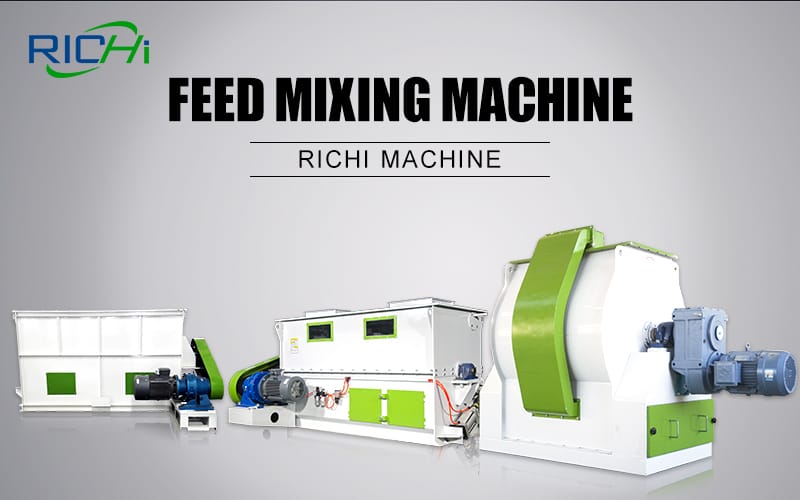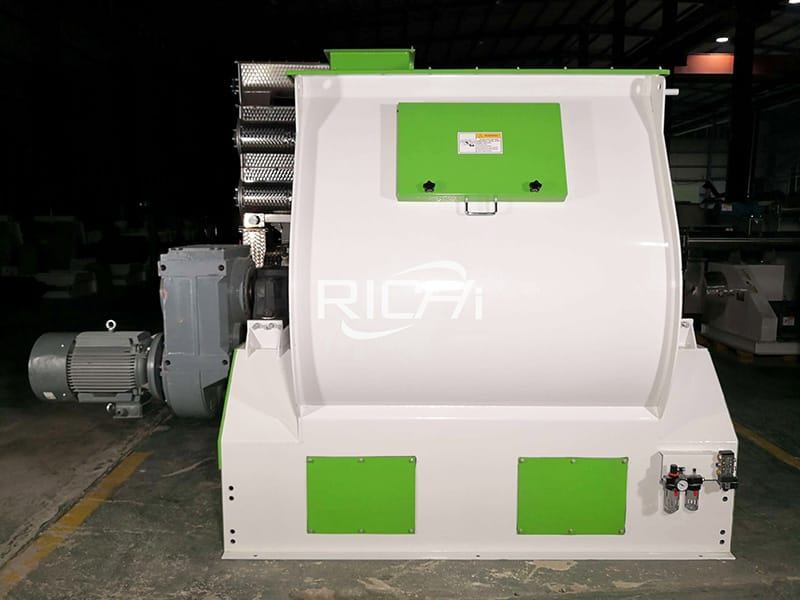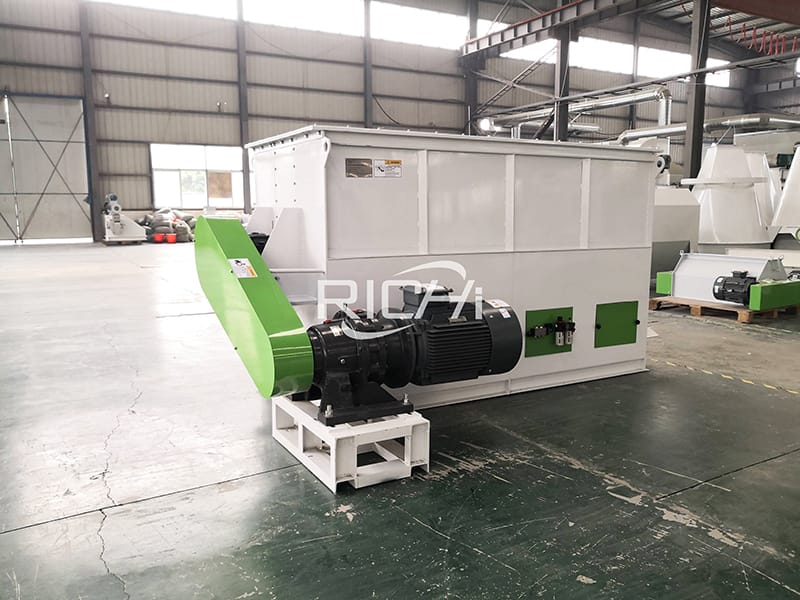Matters needing attention in cattle premix feed production process
1. The role of cattle premix feed
Premix is the abbreviation of additive premix feed. It is the combination of one or more trace components (such as trace mineral elements, various vitamins, synthetic amino acids and certain drugs and other additives) with a carrier or diluent according to An intermediate compound feed product that requires a uniform mixing ratio can be added to the ration according to the proportion when used. The premix is an important part of the complete compound feed. Because different animals and different growth stages have different requirements for various types of nutrients, there is a certain gap in the proportion of premixes for different animals and different growth stages. The premix for cattle is divided into special premix for cows and special premix for beef cattle. Mixture, premix for calves and premix for dairy cows, etc.
The function of the cattle premix feed is to supplement the cattle with trace mineral elements, various vitamins, amino acids and other nutrients, which can enhance the cattle's digestion ability, disease resistance and increase the cattle's daily weight gain. Through comparative experiments, it is found that the daily weight gain of beef cattle with premix added to the diet can be increased by 10%-20%, and the feed conversion rate can be increased by 8%-20%, which can shorten the feeding cycle of beef cattle and enable cattle farmers to obtain Higher efficiency.

2. Cattle feed formula with 4% cattle premix
Currently, the common cattle premixes on the market mainly have three specifications of 2%, 4% and 5%. For example, 4% cattle premixes are generally added at 4% of the concentrate amount. Here are a few recommended formulas for cattle feed:
(1) Option 1 (cow): corn 60%, soybean meal 20%, wheat bran 13%, beef premix 4%, baking soda 1.5%, calcium carbonate 0.8%, salt 0.7%;
(2) Option 2 (calf): corn 55%, soybean meal 23%, wheat bran 15%, cattle premix 4%, baking soda 1.2%, calcium carbonate 1%, salt 0.8%;
(3) Option 3 (beef cattle): 63% corn, 23% soybean meal, 7% wheat bran, 4% beef premix, 2.2% baking soda, 0.8% salt.
3. Control during the mixing process of premixed feed for cattle
In order to obtain satisfactory quality pre-mixed feed, in addition to a cattle animal feed mixer whose structure and technical parameters meet the technological requirements, reasonable arrangement of the front and rear procedures and reasonable use of the mixer itself are important conditions. In addition, the choice of carrier diluent, good charging of the mixer, reasonable operation sequence and proper control of the mixing time are also necessary conditions.
(1) The choice of carrier diluent
The various additives that need to be diluted are usually very fine, so choose a thinner with a particle size and density close to it. Suitable diluents or carriers include commonly used cattle feed ingredients such as soybean flour, wheat flour, defatted rice bran and the like. Generally, materials with fine particle size, no dust, and affinity for the active ingredients in the additives are selected as diluents or carriers.
If the diluent or carrier is selected properly, the finished product does not need to be shipped. If the active ingredient in the additive is not concentrated, there is no need to use a binder. If the pre-mixed product needs to be transported over long distances, grease should be used. The biggest disadvantage of using grease is that a part of the active ingredients of the additives stay on the blades of the mixer and affect the cleaning.

(2) Feeding of the cattle animal premix feed mixing equipment
The order of adding various ingredients depends on the form of the horizontal cattle animal feed mixer, the general order is as follows:
① First send 80% of the diluent or carrier into the horizontal cattle feed mixer;
②Then spread the weighed active ingredient on the diluent or carrier. Some devices are inconvenient to place manually, and the active ingredient can be fed in by a general mechanical method;
③Then send the remaining 20% diluent or carrier.
(3) Eliminate or reduce the storage and transportation process of premix after mixing
In the process of material transportation, due to the effects of gravity, wind, centrifugal force, friction, etc., the uniformly mixed materials change greatly. The longer the transportation distance and the greater the drop, the more severe the classification. Therefore, it is best to pack the mixed materials directly into bags to avoid or minimize the transportation and drop of the mixed materials, and do not use screw conveyors or bucket elevators as much as possible. The height of the silo should not be too high to reduce or eliminate Separation or classification of mixtures.
For each batch of mixtures, it must be clearly identifiable and the packaging bags must be clearly marked. It is best to use colored symbols or labels to distinguish them.

(4) Reasonable use of cow feed mixer
①Proper loading
Regardless of the type of cattle feed mixing equipment, proper charging is a prerequisite for the mixer to work normally and obtain the expected results. If the material is loaded too much, on the one hand, the cow feed mixer will be overloaded. More importantly, too much material will affect the mixing process of the materials in the machine, which will cause the mixing quality to decrease; if the material is too small, the mixing will not be fully exerted. The efficiency of the machine will also affect the mixing quality. Therefore, no matter what kind of horizontal cattle feed mixing machine, the degree of material loading should be effectively controlled, so as to ensure the normal operation of the mixer and make the mixed feed meet the quality requirements.
For batch horizontal ribbon cattle feed mixers, the full coefficient is generally 0.6 to 0.9, and the maximum material level cannot exceed the top surface of the rotor; the full coefficient of the double-shaft blade mixer is generally controlled at 0.6 to 0.85.
②The correct mixing time
For batch mixers, the determination of mixing time is very important for mixing quality. If the mixing time is too short, the materials will be discharged without being fully mixed in the mixer, and the mixing quality cannot be guaranteed; if the mixing time is too long, the materials will be over-mixed in the mixer and cause separation, which will also affect the quality and can Increase in consumption.
The determination of the mixing time depends on the mixing speed of the mixer, which is mainly determined by the type of the mixer. Such as horizontal ribbon mixer, usually 3 to 5 minutes per batch, its length depends on the type and nature of the raw materials, such as moisture content, particle size, fat content, etc.; the mixing time of the biaxial blade mixer is less than 2 minutes per batch; For the drum mixer, because of its slow mixing effect, a longer mixing period is required.
③ Reasonable operation sequence
In the order of feeding, generally the components with a large proportion are added first or most of them are added to the horizontal cattle feed mixing machine, and then a small amount and a small amount of components are placed on the material. Among various materials, those with larger particle size are generally added to the mixer first; while those with smaller particle size are added later. There are also differences in the density of materials. When there is a big difference, the materials with lower density are generally added first, and then the materials with higher density are added.
④Try to avoid separation
Any powder with good fluidity has a tendency to separate. There are three reasons for separation: When materials fall on a pile, larger particles fall under the pile due to greater inertia, and small particles with smaller inertia may be embedded in the cracks on the pile; When materials are vibrated When the particle size and density are different, the smaller particles have a tendency to move to the bottom, while the larger particles have a tendency to move to the top; When the mixture is blown or fluidized, with the difference of particle size and density, separation occurs accordingly.

To avoid separation, take the following methods:
A. Strive for the particle size of the various components of the mixture to be close; or use the method of adding liquid to avoid separation.
B. Master the mixing time and do not over-mix. It is generally believed that the materials should be discharged before being nearly uniformly mixed, and the mixing should be completed during transportation or transit.
C. Reduce the loading and unloading work after mixing to a minimum. The less material falling, rolling or sliding, the better. The mixed storage bin should be as small as possible. The mixed transportation equipment is preferably a belt conveyor, and screw conveyors, bucket elevators and pneumatic conveying devices should not be used as much as possible.
D. Ground the horizontal mixer and add antistatic agent to the feed to reduce the separation of the mixture due to electrostatic adsorption.
(5) Frequently inspect and repair the horizontal cattle feed mixer
For the horizontal ribbon cow feed mixer, after a period of use, the wear, damage and deformation of the ribbon, and the increase in the gap between the ribbon and the mixer shell will greatly affect the uniformity of mixing. In addition, the leakage of the discharge door is also one of the important factors affecting the performance of the mixer. In order to ensure the quality of feed products, the operating performance of the livestock cattle feed mixer must be tested regularly and repaired in a timely manner, once every six months.
To sum up, the mixing process in the production of cattle feed additive premix is actually a very complicated process. In actual cattle premix feed production, sufficient attention must be paid. The quality control of the production process involves many aspects, from raw material selection, The selection of feed processing machinery and equipment, the use of operation, the best process parameters of the mixing process, the sequence of the mixing process, and the operation of personnel. It constitutes a variety of factors that affect the final quality of premix products. Only by comprehensively considering all aspects that affect product quality can we ensure the production of cattle premix products that meet product quality standards and meet the needs of cattle animal growth.
If you want to built one complete pellet production line in your country, pls send the inquiry to us. We will customized design according to your requirement.



